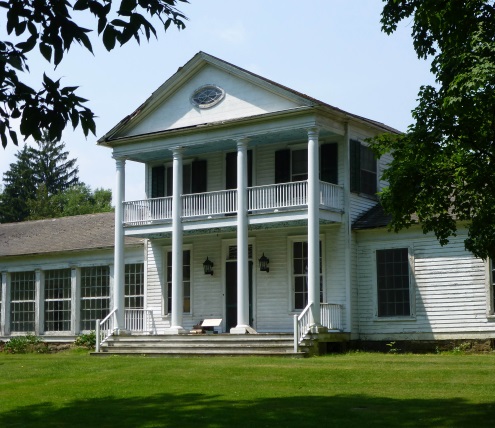
The Pavilion, A Landmark American Country Home – William Ferris Pell built this summer home between 1826 and 1837. It represents an important shift in the architecture and history of the American country estate, situated far from a major urban area. By 1840, the home had become a hotel welcoming guests from across the United States to the iconic ruins of Ticonderoga. Plans are underway for the restoration and adaptive reuse of this National Historic Landmark.
Fort Ticonderoga has been awarded a $2.45 million grant from the New York State Council on the Arts (NYSCA) and Empire State Development (ESD) as part of their Arts & Cultural Facilities Improvement grant program. The grant award was announced at the 2017 New York State Regional Economic Development Council Award Ceremony in Albany, NY.
The Fort Ticonderoga Pavilion Restoration and Adaptive Re-use project will save a national treasure while expanding as a national cultural destination. The adaptive re-use project will include needed visitor amenities, conference center capacity, and new educational and exhibition space.
“Today we have the opportunity to bring new life and purpose to an American treasure. The 1826 National Historic Landmark, the Pavilion, is a major component of our plans to transform Ticonderoga into a national cultural destination,” said Beth L. Hill, Fort Ticonderoga President and CEO. “The restored Pavilion will offer Fort Ticonderoga a wide array of opportunities for guests who might prefer to focus on non-military aspects of the Ticonderoga experience – horticulture, agriculture, culinary, decorative arts, and the scenic beauty of the site. This will enhance the guest experience, extend guest’s length of stay, and expand Fort Ticonderoga’s educational impact.”
Among the plans for the restored Pavilion:
Dedicated exhibit space to tell the story of 200 years of preservation and restoration efforts across the site, and the rich decorative and fine arts collection.
Re-establish the Pavilion as a place for visitor welcome, offering new amenities including indoor and outdoor dining facilities, museum retail and restrooms. New space for programs, special events, conferences and meetings will offer opportunities for rental and food and beverage revenue. The Pavilion operations will also support Fort Ticonderoga’s new maritime program, including tours aboard the Carillon, a 60 ft. tour boat.
Create a teaching kitchen and new culinary programs that will connect Fort Ticonderoga’s gardens and produce with centuries of international history and hospitality and respond to a growing demand for culinary experiences and training. Students will also have the opportunity to dig deep into the site’s rich agricultural story and carry their experience into the teaching kitchen to learn about healthy eating in the past and today.
Expand the space available for museum collections and research by bringing key administrative staff to the center of operations by relocating offices currently housed at Fort Ticonderoga’s Thompson Pell Research Center to the second floor of the Pavilion.
The goal for the project is to raise $5.4 million to complete the project in time for a 2020 grand opening to mark the 200th anniversary of William Ferris Pell’s first efforts to preserve Ticonderoga for future generations.
